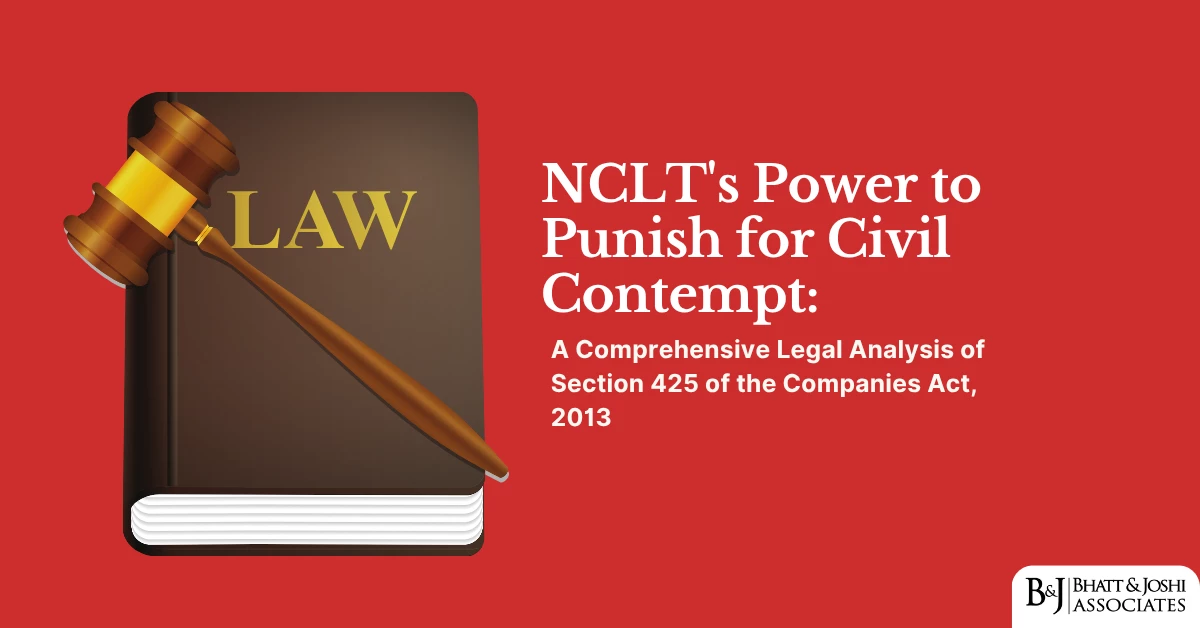By Adv. Aaditya Bhatt

Introduction to Green Credit Programme
India’s Green Credit Programme (GCP), launched by the Ministry of Environment, Forest and Climate Change (MoEF&CC) in October 2023, represents an ambitious market-based mechanism designed to incentivize voluntary environmental actions across various sectors. However, recent revelations through Right to Information (RTI) responses have brought to light significant legal controversies surrounding its implementation. As environmental lawyers and policymakers grapple with these issues, it becomes imperative to critically examine the legal framework, procedural irregularities, and potential implications of this novel environmental governance mechanism. This article undertakes a comprehensive legal analysis of the GCP, examining its statutory basis, implementation challenges, and broader implications for environmental governance in India.
Historical Context of Environmental Market Mechanisms in India
To fully appreciate the legal complexities surrounding the Green Credit Programme, it is essential to understand the evolution of market-based environmental governance in India. Traditional command-and-control approaches have dominated India’s environmental regulation framework since the enactment of key legislation like the Environment Protection Act (EPA) of 1986. However, the past two decades have witnessed a gradual shift toward incorporating market-based instruments that leverage economic incentives to achieve environmental objectives.
The first significant move in this direction came with the Energy Conservation Act of 2001, which provided a legal foundation for energy efficiency certificates. This was followed by the introduction of Renewable Energy Certificates in 2010 under the Electricity Act, 2003. More recently, the Plastic Waste Management Rules incorporated an Extended Producer Responsibility (EPR) framework, introducing a certificate-based compliance mechanism. Each of these mechanisms, however, was implemented only after establishing explicit statutory authority through either new legislation or specific amendments to existing laws.
The Green Credit Programme represents a departure from this established pattern, as it attempts to create a tradable credit system under the umbrella of the Environment Protection Act without a corresponding amendment to the parent legislation. This procedural innovation has raised fundamental questions about the legal validity of the programme and the scope of delegated legislative authority under the EPA.
Legal Framework of the Green Credit Programme
The Green Credit Programme was officially notified through the Green Credit Rules on October 13, 2023, under the Environment Protection Act, 1986. The programme encompasses eight key activities: tree plantation, water management, sustainable agriculture, waste management, air pollution reduction, mangrove conservation, governance, and administration. Under this framework, individuals, communities, and private industries that engage in environment-positive actions receive tradable ‘green credits,’ which can then be used to meet legal obligations such as compensatory afforestation requirements for industrial or infrastructure projects.
The MoEF&CC has justified the programme’s legal basis by citing Section 3 of the EPA, which empowers the Central Government to “plan and execute a nationwide programme for the prevention, control, and abatement of environmental pollution.” The Ministry argues that the GCP supports environmental protection and improvement, placing it squarely within the scope of the EPA’s mandate. Additionally, the Ministry has drawn parallels with the Extended Producer Responsibility framework under waste management rules, suggesting that market-based mechanisms already operate under the EPA umbrella.
However, this interpretation of the EPA’s scope has been contested by legal experts and the Legislative Department of the Ministry of Law and Justice itself. The central question revolves around whether the EPA, as currently written, provides sufficient statutory authority for establishing a market-based trading system for environmental credits without specific legislative amendments. This question is particularly salient given that similar mechanisms, such as the Carbon Credit Trading Scheme, were only implemented after specific amendments to their respective parent acts.
Procedural Irregularities in Green Credit Programme Implementation
Documents obtained through RTI reveal a concerning pattern of procedural irregularities in the implementation of the Green Credit Programme. On October 5, 2023, the Legislative Department under the Ministry of Law and Justice cautioned that the provisions of the Environment Protection Act “perhaps do not support such business objects or activity and rules to be framed for the purposes.” The Department advised the Environment Ministry to “examine the legality of the proposed Green Credit Rules in consultation with the Department of Legal Affairs.”
Despite this explicit recommendation, the Environment Ministry proceeded with the notification of the Green Credit Rules on October 13, 2023, without obtaining the suggested legal review from the Department of Legal Affairs. The Ministry’s internal communications reveal that it justified this decision based on “the importance of launch and early roll out for implementation of the Green Credit Programme,” suggesting that programmatic priorities may have superseded legal due diligence concerns.
The issue reemerged on January 4, 2024, when the Legislative Department, while reviewing the methodology for tree plantation-based credits, noted that it had no record of advice from the Department of Legal Affairs on the matter. To this observation, the Environment Ministry simply referred back to its submissions from October 10, 2023, without addressing the underlying legal concerns.
These procedural irregularities raise important questions about administrative law principles, particularly the doctrine of procedural propriety. The Supreme Court has consistently held that administrative actions must adhere to procedural fairness and due diligence. In cases like Cellular Operators Association of India v. TRAI (2016), the Court emphasized that regulatory actions must follow proper consultative procedures and consider expert advice. The apparent sidestepping of the Law Ministry’s recommendations may potentially render the Green Credit Rules vulnerable to judicial challenge on procedural grounds.
Comparative Analysis with Related Legal Frameworks
To assess the legal validity of the Green Credit Programme, it is instructive to compare it with other market-based environmental mechanisms in India, particularly those that have undergone specific legislative authorization.
The Carbon Credit Trading Scheme, announced in the 2023 Union Budget, required an amendment to the Energy Conservation Act before implementation. The amendment explicitly empowered the government to specify a carbon credit trading scheme and issue carbon credit certificates. Similarly, the Renewable Energy Certificate mechanism was established only after specific provisions were included in the Electricity Act regulations.
In contrast, the Environment Ministry has justified the GCP by drawing parallels with the Extended Producer Responsibility framework under waste management rules. However, this comparison merits careful scrutiny. As noted by senior advocate Sanjay Upadhyay, “The comparison of extended producer responsibility framework and green credit is an unfair comparison and almost amounts to comparing apples with oranges. This is because EPR is not voluntary but obligatory and the green credit program is a voluntary program.”
Furthermore, the EPR framework operates within a narrower regulatory scope, focusing specifically on producer obligations for waste management, rather than creating a broad-based trading platform for diverse environmental activities. The regulatory intent and operational scope of these mechanisms differ significantly, raising questions about the validity of drawing direct legal parallels between them.
Constitutional and Administrative Law Implications
The Green Credit Programme raises several important questions of constitutional and administrative law that extend beyond procedural irregularities to touch upon fundamental principles of separation of powers and delegated legislation.
The doctrine of ultra vires is particularly relevant here. This doctrine limits administrative actions to the scope of authority granted by the parent legislation. In Vide State of Karnataka v. H. Ganesh Kamath (1983), the Supreme Court held that delegated legislation must conform strictly to the parent act’s authorization. The question emerges whether the Green Credit Rules, by creating a market-based trading system without explicit authorization in the Environment Protection Act, exceed the scope of delegated legislative authority.
Additionally, the principle of legislative intent is central to interpreting statutory powers. When the EPA was enacted in 1986, market-based environmental governance mechanisms were not prevalent in India’s regulatory landscape. This raises the question of whether the establishment of a trading platform for environmental credits falls within the original legislative intent of the EPA.
The constitutional principle of “colorable legislation” may also be relevant. This principle, established in cases like K.C. Gajapati Narayan Deo v. State of Orissa (1953), holds that what cannot be done directly cannot be done indirectly. If creating a market-based environmental credit system would normally require legislative amendment (as with carbon credits), implementing such a system through rules without amending the parent act might potentially be viewed as circumventing the legislative process.
Stakeholder Perspectives and Expert Opinions
Legal experts and former government officials have expressed varying views on the legal foundation of the Green Credit Programme. Prakriti Srivastava, a retired Indian Forest Service officer and former Principal Chief Conservator of Forest, Kerala, has stated unequivocally that “the Environment Protection Act in no way provides for a business model for exchange of green credits for compensatory afforestation.” She argues that if the EPA were to be used for such a purpose, it should have been amended following due process, including parliamentary approval.
Environmental law practitioners have highlighted another dimension of concern: the potential for regulatory uncertainty. When programmes are implemented without clear legislative mandates, they create unpredictability for stakeholders and may face challenges in courts, undermining their effectiveness and longevity. This is particularly problematic for market-based mechanisms, which rely on stable, predictable frameworks to build investor confidence.
Industry stakeholders, meanwhile, have shown significant interest in the programme despite its legal uncertainties. Since its launch, 384 entities, including 41 public sector undertakings such as Indian Oil Corporation Ltd, Power Grid Corporation of India Ltd, and National Thermal Power Corporation Ltd, have registered for participation. This suggests a strong market appetite for such mechanisms, even as legal questions remain unresolved.
Judicial Precedents on Environmental Governance
Indian courts have developed a rich jurisprudence on environmental governance that offers insights into how the Green Credit Programme might be evaluated in potential legal challenges.
In Indian Council for Enviro-Legal Action v. Union of India (1996), the Supreme Court recognized the government’s duty to implement environmental protection measures effectively but also emphasized the importance of following established legal procedures. Similarly, in Vellore Citizens Welfare Forum v. Union of India (1996), while endorsing the ‘polluter pays’ principle that aligns with market-based mechanisms, the Court underscored the need for such principles to be implemented within the existing legal framework.
More recently, in M.C. Mehta v. Union of India (2017), concerning vehicular pollution in Delhi, the Supreme Court acknowledged the value of innovative regulatory approaches but stressed that such innovations must be grounded in sound legal authority. Similarly, in Hanuman Laxman Aroskar v. Union of India (2019), the Court held that environmental regulatory bodies must act within their statutory mandates and follow proper procedures.
These precedents suggest that while courts may be sympathetic to innovative environmental governance mechanisms like the GCP, they are likely to scrutinize whether such mechanisms have been established with proper legal authority and through appropriate procedural channels.
International Perspectives and Best Practices
The legal challenges facing India’s Green Credit Programme are not unique. Many jurisdictions worldwide have grappled with similar questions when implementing market-based environmental mechanisms. Examining these international experiences provides valuable context for evaluating India’s approach.
The European Union’s Emissions Trading System (EU ETS), often cited as a model for market-based environmental governance, was established through a specific directive (Directive 2003/87/EC) that provided clear legislative authority. Similarly, California’s Cap-and-Trade Program was authorized by specific legislation (AB 32) before implementation. These examples highlight the international norm of establishing explicit legislative foundations for environmental market mechanisms.
The United Nations Framework Convention on Climate Change (UNFCCC) has also emphasized the importance of robust legal frameworks for market-based mechanisms. Article 6 of the Paris Agreement, which governs international carbon markets, explicitly requires participating countries to establish clear regulatory frameworks with appropriate legal authority.
These international precedents suggest that robust legal foundations are not merely procedural formalities but essential elements for the credibility and effectiveness of market-based environmental mechanisms. They provide stakeholders with certainty and confidence in the system’s stability and legitimacy.
Path Ahead for Green Credit Programme
Given the legal uncertainties surrounding the Green Credit Programme, several potential remedies and paths forward merit consideration:
First, ex post legislative validation could address the current legal ambiguities. The government could introduce amendments to the Environment Protection Act explicitly authorizing the establishment of a green credit trading system, similar to the approach taken with the carbon credit trading scheme. Such amendments could provide retrospective validation for the actions already taken while establishing a clear legal foundation for future operations.
Second, comprehensive rules with enhanced procedural safeguards could be formulated. Even without amending the parent act, the government could draft more comprehensive rules that address the concerns raised by the Legislative Department, possibly after obtaining formal opinions from the Department of Legal Affairs. These rules could include enhanced procedural safeguards, clearer definitions of terms, and more robust governance mechanisms.
Third, judicial clarification through a reference or test case could be sought. The government or stakeholders could seek judicial clarification on the scope of the EPA’s provisions relating to market-based mechanisms. This approach would provide authoritative guidance on the legal boundaries within which such mechanisms can operate under the current legislative framework.
Finally, integration with established legal frameworks could be pursued. The GCP could be more explicitly integrated with established legal frameworks such as the compensatory afforestation regime under the Forest (Conservation) Act, providing a clearer legal nexus between the credits and their intended uses.
Environmental Justice and Equity Considerations
Beyond the technical legal questions, the Green Credit Programme also raises important environmental justice and equity considerations that have legal dimensions. Market-based environmental mechanisms have been criticized globally for potentially exacerbating existing inequalities if not designed with explicit equity safeguards.
The Supreme Court, in cases like Subhash Kumar v. State of Bihar (1991) and M.C. Mehta v. Union of India (Environmental Education case, 1991), has recognized environmental rights as an integral aspect of the fundamental right to life under Article 21 of the Constitution. This rights-based perspective requires environmental governance mechanisms to not only be legally sound but also equitable and accessible to all sections of society.
The GCP’s design and implementation must therefore be evaluated not only for its technical legal compliance but also for its alignment with constitutional principles of equity and justice. This includes ensuring that the benefits of the programme reach marginalized communities and that participation is not limited to large corporate entities with resources to navigate complex market mechanisms.
Implications for Environmental Governance
The legal controversies surrounding the Green Credit Programme have broader implications for environmental governance in India, particularly as the country increasingly adopts market-based regulatory approaches.
The tension between regulatory innovation and legal due process highlighted by this case reflects a broader challenge in environmental governance: balancing the need for rapid, effective responses to environmental challenges with the importance of procedural propriety and legal certainty. As climate change and other environmental crises become more urgent, this tension is likely to intensify.
The GCP case also underscores the importance of transparent, consultative processes in developing environmental regulations. The apparent sidestepping of legal advice and limited public consultation in the programme’s development raises concerns about regulatory capture and democratic accountability in environmental policymaking.
Finally, the case highlights the need for a more comprehensive legal framework for market-based environmental mechanisms in India. Rather than addressing each mechanism in isolation, there may be value in developing overarching legislation that provides general principles and safeguards for all such mechanisms, similar to approaches taken in jurisdictions like the European Union.
Conclusion: Strengthening the Legal Backbone of the Green Credit Programme
The Green Credit Programme represents an innovative approach to environmental governance in India, with potential benefits for forest cover enhancement and sustainable practices. However, its implementation has raised significant legal questions that merit careful consideration by policymakers, legal practitioners, and the judiciary.
The procedural irregularities in the programme’s implementation, particularly the apparent sidestepping of legal advice from the Ministry of Law and Justice, raise concerns about adherence to principles of administrative law and proper procedure. The more fundamental question of whether the Environment Protection Act provides sufficient legal basis for establishing a market-based trading system for environmental credits without specific legislative amendments remains unresolved.
As the programme continues to operate and attract participants, these legal uncertainties create potential risks for both the government and stakeholders. They also raise broader questions about the legal foundations of market-based environmental governance in India and the appropriate balance between regulatory innovation and legal due process.
The way forward should involve addressing these legal challenges transparently and systematically, potentially through legislative amendments, enhanced procedural safeguards, or judicial clarification. Such measures would not only strengthen the legal foundation of the Green Credit Programme but also contribute to the development of a more robust legal framework for market-based environmental governance in India.
In an era of accelerating environmental challenges, innovative regulatory approaches like the Green Credit Programme are increasingly necessary. However, their effectiveness and legitimacy ultimately depend on their grounding in sound legal principles and proper procedural implementation. The legal controversies surrounding the GCP offer valuable lessons for ensuring that future innovations in environmental governance are both effective in addressing environmental challenges and robust in their legal foundations.
References
Statutory Materials
- The Environment (Protection) Act, 1986
- The Energy Conservation Act, 2001 (as amended in 2023)
- The Electricity Act, 2003
- Green Credit Rules, 2023
Case Law
- Cellular Operators Association of India v. TRAI (2016) 7 SCC 703
- State of Karnataka v. H. Ganesh Kamath (1983) 2 SCC 402
- K.C. Gajapati Narayan Deo v. State of Orissa AIR 1953 SC 375
- Indian Council for Enviro-Legal Action v. Union of India (1996) 3 SCC 212
- Vellore Citizens Welfare Forum v. Union of India (1996) 5 SCC 647
- M.C. Mehta v. Union of India (Vehicular Pollution Case) (2017) 7 SCC 243
- Hanuman Laxman Aroskar v. Union of India (2019) 15 SCC 401
- Subhash Kumar v. State of Bihar (1991) 1 SCC 598
Disclaimer: The views expressed in this article are the personal opinions of the author and do not constitute legal advice. Readers are advised to consult qualified legal professionals for specific legal matters.













